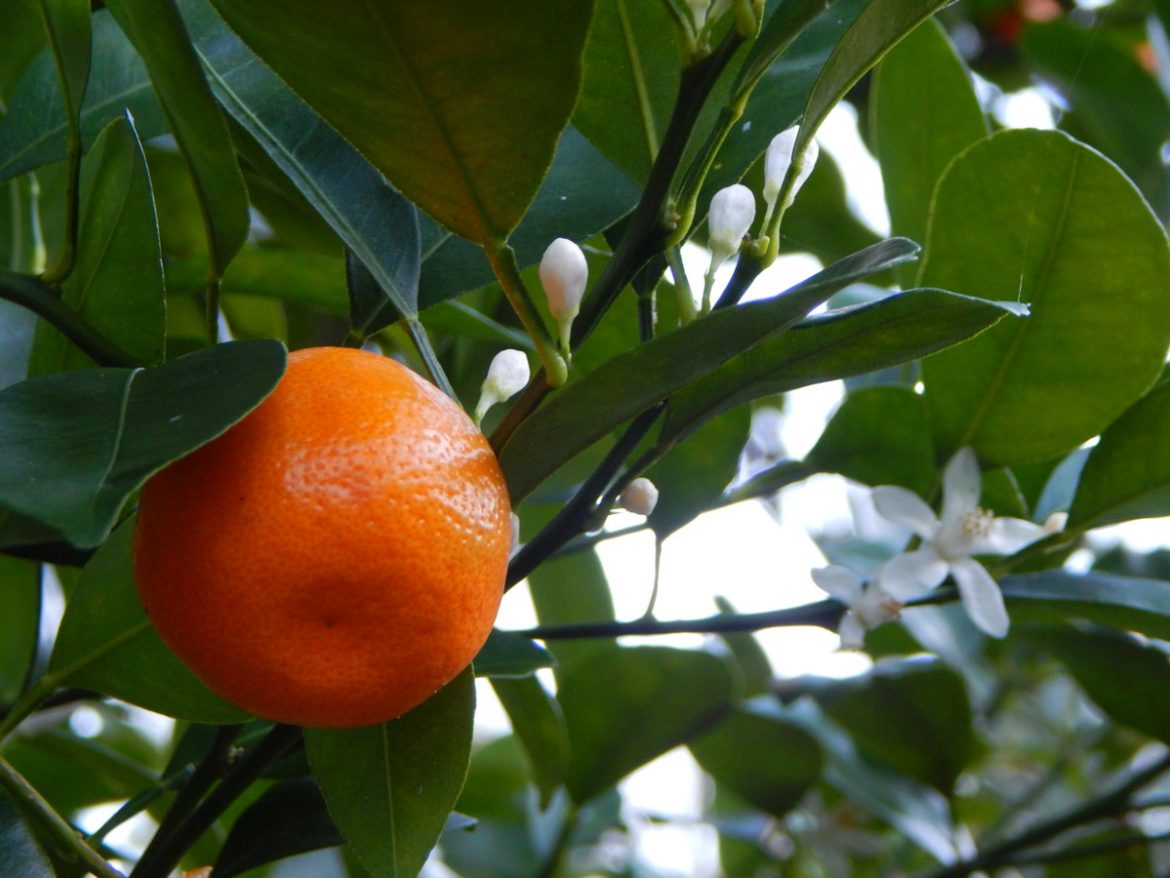EM asks some questions about my old North Florida Food Forest:
Was watching one of your older Florida Food Forest vids (link below), and have a couple of questions when you get a minute.
1. Can you briefly explain why having wasps around a fig tree is bad? Someone told me they lay eggs, or use the fruit in some way as part of their life cycle. If this is true, is there some method I can use to keep them away from fig tree, maybe light row cover?
2. You have a Bay tree growing, and I wondered if it was Sweet Bay or Laurel Bay. Thought Laurels were best leaves for cooking purposes.
3. At minute 32:30, you mention some sort of tree that’s good for making marmalade, and I couldn’t make out what kind of tree you said it was. It is a sort of citrus? What color is the fruit when it’s ripe, and where can I get one?
I’m just north of Houston city limits, and we’ve steadily been 10 degrees below our norm for temps almost every day. We even had our first freeze, Nov. 12-14, and I don’t mean just barely hitting 32F; one night it was 28 degrees. This is about 6 weeks earlier than the usual. Hope this isn’t a trend, which is why I’m pretty much growing all in containers (except for Seminole Pumpkins in the Spring).
Any help you can give me with these questions is much appreciated. You and Family must either be busy in the garden, or traveling on vacation; haven’t had many videos out of you lately.
Thanks much! Merry Christmas (coming soon),
-EM
Here is the video she references:
Question 1: Wasps around fig trees?
I’ve never had a problem with wasps causing trouble with figs. Certain fig varieties require certain wasps to set fruit. In Florida, this isn’t the case as the figs we’re growing don’t require the wasp for pollination. Someone likely got their info mixed up, unless I’m missing something.
Question 2: What type of bay?
There are multiple varieties of bay which grow wild in Florida and can be used the same as the common culinary bay (Laurus nobilis). Mine was one of them, but I don’t have a species nailed down. You can identify the bays by their smooth, attractive leaves and pungent bay scent when crushed.
Question 3: The marmalade tree?
That is the calamondin, a super-sour citrus which produces a fruit rather like a tiny tangerine. You can see us put it to good use in this video from a past Christmas:
As for not being around much or making videos, yes – I have been busy. I also am rather tired of YouTube, so that has also been a factor. I’m having more fun making furniture than I was making videos, as crazy as that might sound. I’m also making some musical instruments.
When we get our land nailed down, I’ll probably restart the regular YouTube production.
Have a great week.


6 comments
A popular rootstock here in Arizona is the Sour Orange (I think also called Seville Sour Orange) and it grows very well in our conditions but makes a sour fruit if allowed to overtake the grafted variety. The one thing it’s good for is marmalade, so they say!
DAVE! Thanks so much for answering my questions! Here on Gulf Coast TX, we can get tons of wasps around out figs as they ripen. I have Brown Turkey and TX Everbearing, so they don’t require outside pollination. Maybe they just like the sweet taste. If not a problem, then, I won’t worry. As for the calamondin, I like the Whiskey Sour idea, and just plain old sour lemonade. THANKS AGAIN FOR YOUR GREAT HELP!
They like the sugar, I’m sure. I wouldn’t worry about it, though. Just make sure you don’t bite into a fig with a wasp inside.
Okay Dave, now you have me a bit confused…again. Why would a wasp be inside a fig? If there’s no lifecycle attached to the wasps needs? (Hoping you’re joking, which you often are! LOL!)
Wasps like to eat sweet things. Some figs have “open eyes,” meaning a big enough hole for a wasp to enter and get stuck. That’s all.
And you’re quite welcome.
Comments are closed.